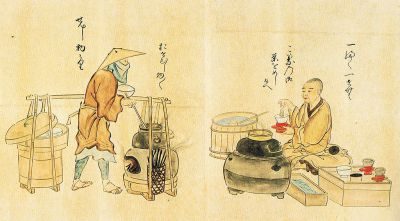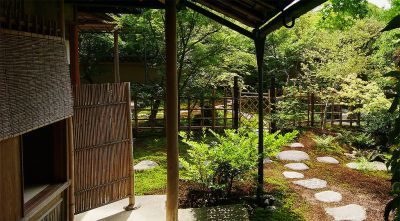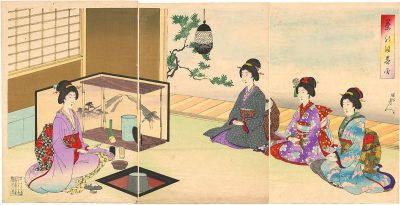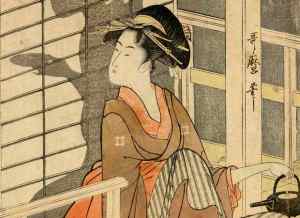High culture and the Japanese Tea Ceremony: Legacy of history and formal settings
James Jomo, Kanako Itamae, and Lee Jay Walker
Modern Tokyo Times
The Japanese green tea ceremony was first documented in the ninth century but elements emerged in the eighth century according to some historians. Not surprisingly, major modifications and deeper meanings – in a cultural context – have changed throughout the centuries. Matcha, powdered green tea, is served based on certain rituals related to culture in Japan. Equally, it can be more simplistic depending on the occasion. Therefore, the tea ceremony is flexible in nature. Also, historically, Zen Buddhism – in the spiritual realm – influenced the religious angle of the tea ceremony during the inception period and the following centuries.
Otemae is the performance name of this ritual and today it is a popular pastime in modern Japan. Individuals learn the skills of ritual, elegance, grace, and to perfect the cultural dimension of the tea ceremony. The ceremony itself is called chanoyu or chado (also pronounced sado) and – in the early period – the religion of Zen Buddhism enabled a strong inner feeling to develop.

Chakai and chaji are the two different classifications for tea gatherings. Chakai is more common because it is used for hospitality. Indeed, some Japanese gardens perform this for tourists throughout Japan – or for individuals who seek a refined time to relax. For example, in Rikugien Garden in Komagome, Tokyo, you have a small resting place by the pond whereby visitors to the garden can enjoy Chakai.
The green tea in Rikugien Garden in Komagome tastes delicious and a small Japanese sweet is served with the green tea. However, because of the splendid nature of this garden then you can equally feel the spiritual connection. Hence, this simplistic pleasure fuses well with the senses.

Chaji is very different and can take around four hours or more. This is based on kaiseki being a full course meal. It is well worth trying this because of the mixture of elegance, food preparation, motion, taste, thick tea, thin tea, and the ethical side of this all fuses together.
Ledia Runnels says, “In the 9th century, Chinese author Lu Yu wrote The Classic of Tea, that focused on the cultivation and preparation of tea. Lu Yu’s life was influenced by the Zen Buddhism school of Zen–Chán. Needless to say, his ideas had a strong influence in the development of the Japanese tea ceremony.”

Ledia Runnels further says, “In the 9th century, tea was brought to Japan by the Buddhist monk Eichū, who had visited China and brought tea seeds back with him… It was near the 12th century when the style of tea preparation called “tencha” became popular. In this ceremony, matcha was placed in a bowl with hot water poured over it. The water and ground tea were then whipped together.”
Astonishingly, while the image of samurai warriors is based on strength and war, the philosophical dimension was equally important and the same can be said of culture. Indeed, by the thirteenth century, the ruling elites within the samurai class used the art of tea in connection with high culture. In time “Wabi-sabi” would enter the tea ceremony and the notorious warlord Oda Nobunaga (1534-1582) admired the cultural angle. Therefore, Oda Nobunaga, the man who laid the foundation stone for the centralization of Japan, focused on art and the tea ceremony – while being heavily focused on war and power concentration.

Turning back to modern Japan, then the tea ceremony is used for a variety of situations. Despite this, the old deeper meaning still exists within special environments and occasions. The cultural angle of places including Kamakura, Kyoto, Koyasan, Nara, and Nikko, remains strong – and the same applies to the tea ceremony in these religious and tourist places. Therefore, just like the Kamakura period in Japanese history, the tea ceremony remains firmly within Japanese high culture.
http://lediarunnels27221219.wordpress.com/2011/05/05/green-tea-ceremony-japan/
http://lediarunnels27221219.wordpress.com/ Articles by Ledia Runnels

Modern Tokyo News is part of the Modern Tokyo Times group
DONATIONS to SUPPORT MODERN TOKYO TIMES – please pay PayPal and DONATE to sawakoart@gmail.com
http://moderntokyotimes.com Modern Tokyo Times – International News and Japan News
http://sawakoart.com – Sawako Utsumi personal website and Modern Tokyo Times artist
https://moderntokyonews.com Modern Tokyo News – Tokyo News and International News
http://global-security-news.com Global Security News – Geopolitics and Terrorism
PLEASE JOIN ON TWITTER
https://twitter.com/MTT_News Modern Tokyo Times
PLEASE JOIN ON FACEBOOK
